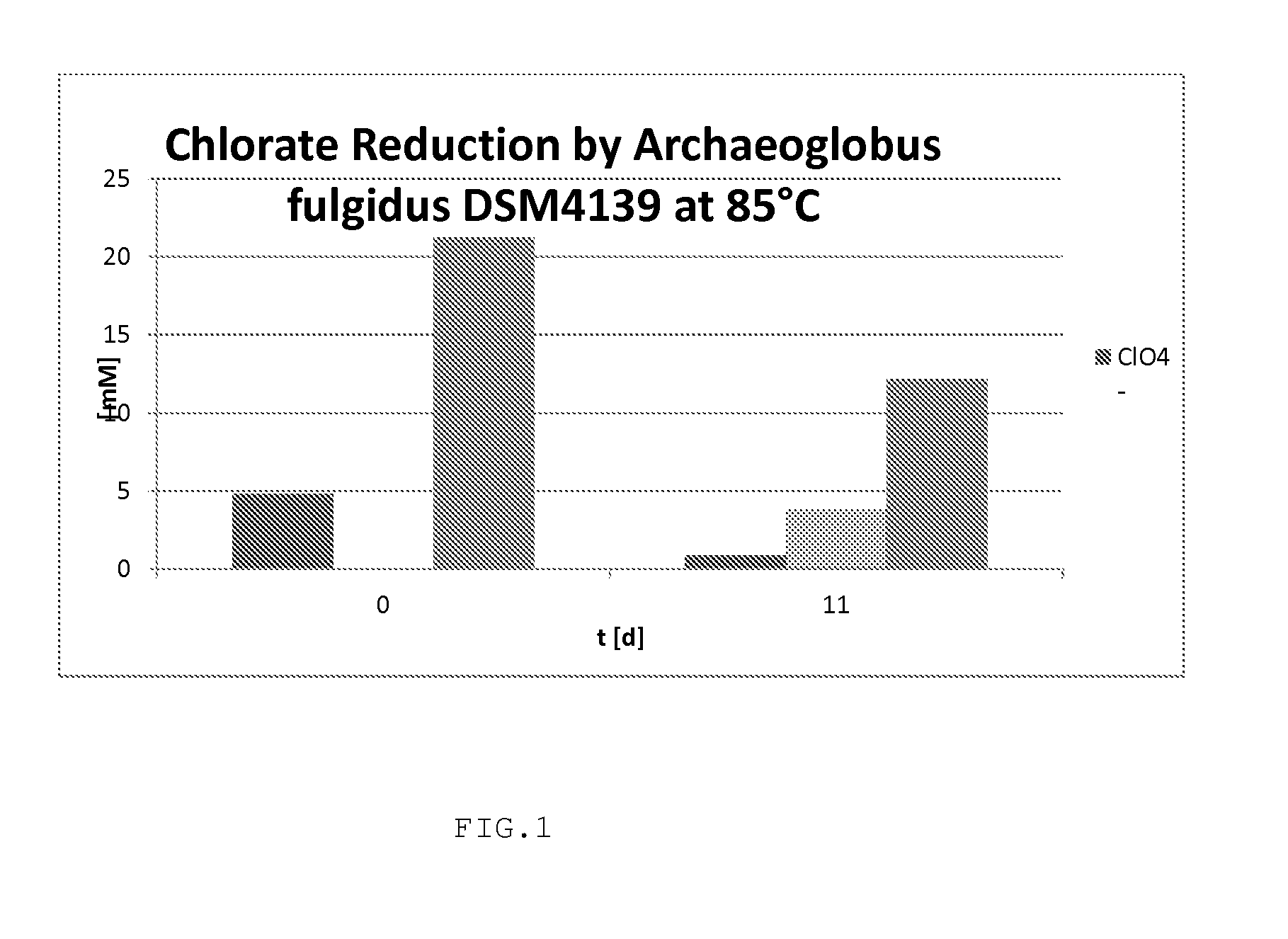In-situ microbial oxygen generation and hydrocarbon conversion in a hydrocarbon containing formation
a hydrocarbon containing, in-situ oxygen technology, applied in the direction of fermentation, fluid removal, borehole/well accessories, etc., can solve the problems of hampered utilization of microorganisms to enhance hydrocarbon recovery, and achieve enhanced hydrocarbon recovery, improved quality, and enhanced bioavailability and biodegradability
- Summary
- Abstract
- Description
- Claims
- Application Information
AI Technical Summary
Benefits of technology
Problems solved by technology
Method used
Image
Examples
example
[0050]A suitable embodiment of the method according to the invention, comprises the following steps:
a) Screening whether a target underground crude oil and / or natural gas containing reservoir formation has features, such as temperature, salinity, heterogeneity, oil characteristics, micro-organisms, volatile fatty acids, hydrogen ions, acetate, propionate or butyrate and / or other potential electron donors, etc., which allow use of the method according to the invention;
b) Analyzing the composition of the water, oil and / or natural gas in the formation, for example by screening a sample taken from the formation;
c) Identification of potentially interesting micro-organisms with molecular DNA technologies using either general (16S rRNA-related) primer sets or enzyme / functional group specific primer sets (nitrate / nitrite-reductase, (per)chlorate reductases, chlorite dismutase, or hydrocarbon (alkane) degrading enzymes or using metagenomics;
d) Isolation of potentially interesting indigenous ...
PUM
 Login to View More
Login to View More Abstract
Description
Claims
Application Information
 Login to View More
Login to View More - R&D
- Intellectual Property
- Life Sciences
- Materials
- Tech Scout
- Unparalleled Data Quality
- Higher Quality Content
- 60% Fewer Hallucinations
Browse by: Latest US Patents, China's latest patents, Technical Efficacy Thesaurus, Application Domain, Technology Topic, Popular Technical Reports.
© 2025 PatSnap. All rights reserved.Legal|Privacy policy|Modern Slavery Act Transparency Statement|Sitemap|About US| Contact US: help@patsnap.com

